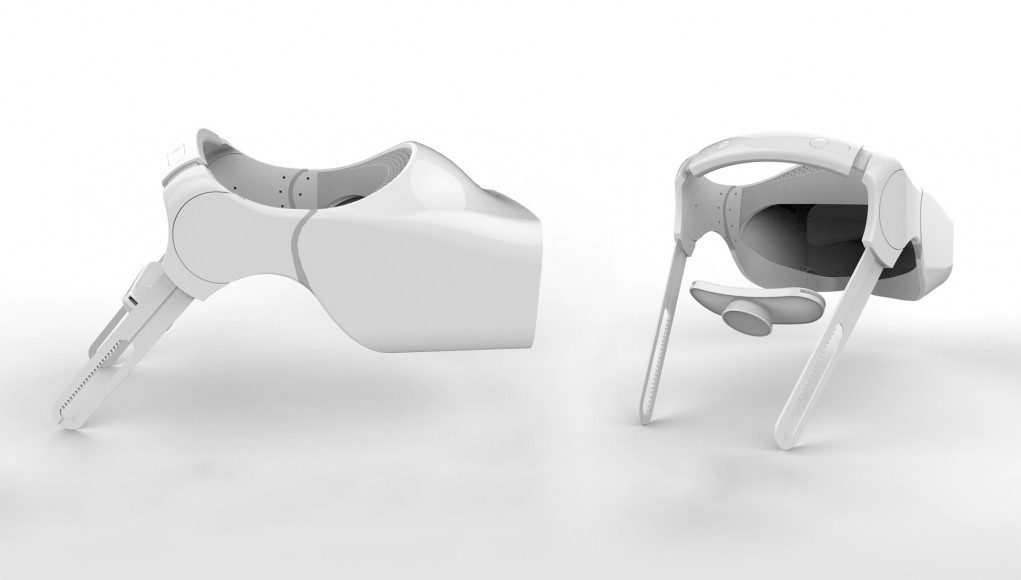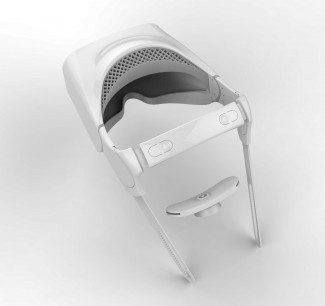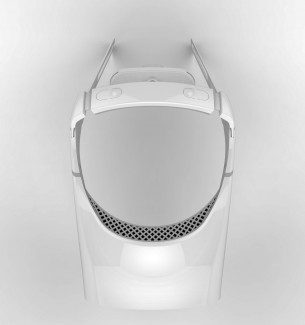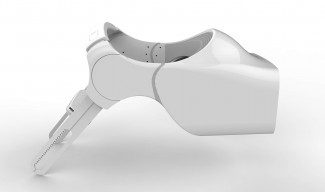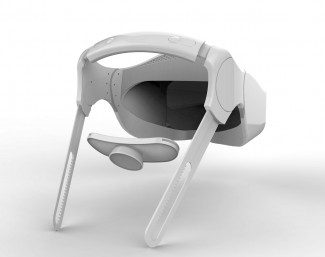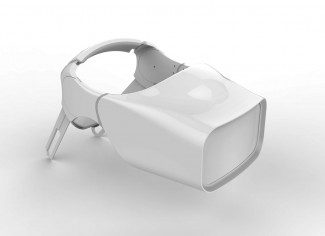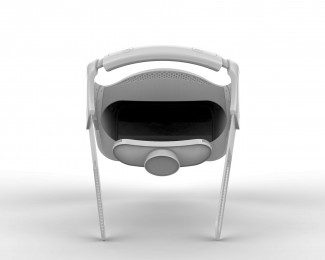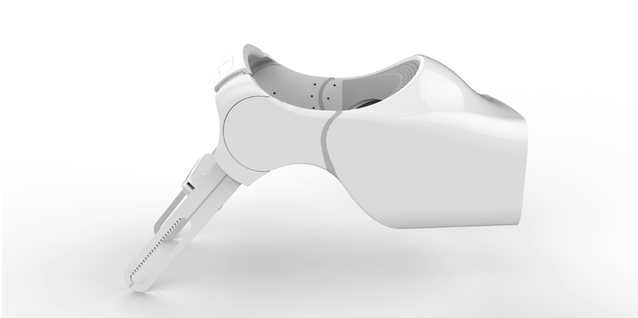Just before nearly doubling their Kickstarter funding goal of $250,000, Fove introduced a new and improved design for their eye-tracking VR headset, making it lighter, smaller, and more ergonomic.
Fove calls their new industrial design “refined and enhanced” with the addition of a new form factor and a new ergonomically improved head strap that does away with elastic bands and velcro from previous prototypes.
Fove says that the new system of ratcheting, articulated clasps will “enable the headset to adapt to any head form,” and that the velcro straps that used to hold the headset locked in place during gameplay will be replaced with a dial adjustment—an effort by Fove to make getting the perfect fit a much more user-friendly experience.
See Also: FOVE Gets Samsung Ventures Investment, Guarantees Lighthouse Positional Tracking
Our experience with previous prototypes suggest that getting a good fit, and keeping locked in place so the headset can accurately track your eyes, is probably one of the most important parts of using Fove. Too much wiggle room can throw off the eye-tracking calibration. Too tight, and it can cause discomfort during gameplay.
Fove Project Manager Yamato Kaneko echoed the statement that “the headset’s front form-factor will be refined and enhanced, resulting in better stability, increased air-circulation performance, and a substantially more comfortable experience,” but remained tight-lipped on any design specifics that might facilitate the changes.
Fove has also expressed a clear interest in replacing their LCD display with OLED, saying that it “will only improve the experience because there will be no smearing. The resolution will be unchanged, however the screen door will be very slightly different.”
Originally Lighthouse ‘room scale’ tracking, a positional tracking solution spearheaded by Valve, was only promised if Fove reached its $700,000 stretch goal. Since Samsung Ventures took interest in Fove and guaranteed Lighthouse integration with their financial support a few weeks before the campaign’s end, Fove has yet to address how these changes will affect their overall design. It seems however that with the new industrial design, Fove is only locking down their desired form-factor and ergonomics, and that more updates on the integration of Lighthouse tracking nodes will follow once they get closer to their estimated delivery date of May 2016.
If you missed the Kickstarter, Fove has a waitlist for those hoping to pre-order the device.
In the meantime, visitors to J-POP Summit 2015 can get a look at the eye-tracking VR headset at the Interactive Pavilion, where all manner of Japanese tech will displayed. Ricoh Theta, the 360 camera also of Japanese origin, have partnered with Fove to bring the Attack on Titan manga series to life. The summit is being held August 8-9 at Fort Mason Center in San Francisco, CA.

